
Review on 🚚 BougeRV 23 Quart Portable Refrigerator Car Freezer Fridge - 12V Compressor, 12/24V DC & 110~240V AC, -7℉~50℉ - Truck Van RV Jeep Camper SUV Boat - Ideal for Travel, Camping, Road Trips, and Tailgating by Luke Hodes

Great addition to a small sailboat
I have a 30ft sailboat with a basic ice box that needs to be filled with ice before sailing. 60 pounds of ice cream in a box will last around six days in moderate weather if the box is handled properly, meaning everything is pre-chilled before being placed in the box and no warm clothes are added later. It is also necessary to minimize the number of opening/closing cycles. This is a problem I've lived with for 20 years. I wasn't thrilled with the move to boxed cooling due to the hassle factor, hole cutting requirements, and space. When these compact 12V DC coolers reached what appeared to be a decent maturity, I decided to purchase a unit that complements my cooler and can be easily removed. from a boat for road travel and other purposes. My selection process was pretty straightforward, decent reviews, lowest cost, right size for my application. Not too small, not too big. I originally wanted a fridge freezer but prices have gone up a lot and I noticed that this unit can be split into two compartments so I figured I could set it up to be some sort of fridge freezer Clone delivers when I get the temperature set correctly. So I first had to install cigarette lighter sockets that would support the cooler's power consumption. In the car there is no problem but on the boat most cigarette lighter sockets are wired for low power applications and the two I had couldn't handle the load which can reach 5 amps when the compressor is started. In the maximum (not economical) mode, with the compressor running, the device consumes about 3 amperes. When the compressor is not running, it uses much less energy. I would say I've seen 30% compressor use at around 70-75 degrees ambient. So I was using an average of about 2 amps or 24 W/hr per hour. I was very happy with this performance, but I expect that the summer temperatures will increase the power consumption significantly. For a sailor these numbers are really important as we have to rely almost exclusively on battery and solar/wind charging. All in all, I am very satisfied with the energy consumption figures. An important note for those who use a non-standard car cigarette lighter that is rated for a higher amperage. When I attempted to use the cigarette lighter sockets on the boat, the unit started but I saw the input voltage meter on the cooler rapidly decreasing the input voltage to the point where the unit's low voltage protection shut the cooler off. It turned out that the wiring to my cigarette lighter was so small that once charged, the output voltage began to drop to unacceptable levels. If you are running your own outlets, make sure you choose a wire gauge that minimizes the voltage drop between the cooler and your batteries. I used 10 AWG wire, which is probably overkill, but I wanted the cooler to see almost the same voltage as the battery. All of this is completely pointless unless the unit does a decent job of chilling/freezing. And in my experience it does it very well (used the cooler 24/7 on my recent 6 day cruise). As I had planned, I used the center baffle to try to create a fridge freezer. I put the frozen food in the compartment closest to the control panel and the beer in the other compartment, set the temperature to 25 degrees and waited for the beer to freeze or the frozen food to thaw. Neither the one nor the other. The beer stayed damn cold and the frozen food stayed frozen! Terrific. I was very pleased. Good power consumption, good cooling performance, no noise (but my hearing isn't the best), can function as a combi freezer, light and portable, relatively low center of gravity for a secure footing (sailors will appreciate it), and the physical properties like door opening and accessibility of the controls are excellent. You really need to play around with the controls a bit to understand them. Note to manufacturer: Ask an English (or other language with English subtitles) speaker to make a video explaining how to use the controls. As usual, the included manual is mostly gibberish. There are third-party videos on the Internet, but manufacturers, it's not difficult. You have a great product, how can it be to make great patterns? So the last topic is space. I have 30 Qt which seems like a good compromise between size, weight and capacity. It's not a big capacity. Just a cubic meter. But that's more space than you can imagine considering a cubic foot. First, refrigerate or freeze your items before loading them (I'm specifically talking about seafarers). You can also use shore power for initial cooling, of course with the included 110VAC adapter, but you don't want to cool your batteries initially if you can avoid it. This pre-cooling is especially important if you want to make a fridge freezer. I suspect the freezing process will freeze everything in the box, but if you pre-chill you may find that the Goldilocks temperature keeps the two compartments in order. I kept my beer very cold and the Cornish Chicken was frozen for a full 6 days. But the beer was cold and the chicken was frozen and came in the crate before the trip. Alright, back to space. I loaded 9 cans of 16oz beer on the colder side, leaving some room if I wanted to put something smaller inside. , three lamb chops and a big bag of M&Ms which I eat frozen (try it you'll like it). And I have a significant amount of extra space. I could easily add a bag or two of frozen veggies. Overall, after six days of living with this thing 24/7, using my home batteries and 200-watt solar panels, my first impressions were excellent. I'm very happy with the performance, size, ease of use and looks. Durability will be the next test but mfg backs the device with a 3 year warranty which gives some confidence that they have put some durability into this device. constantly. It's hard for me to say anything bad about him. We're in summer-like temperatures now - around 35 degrees Fahrenheit in the middle of the day - and the device's power consumption has increased slightly, but not by much. I was drawing about 2 amps per hour at lower temperatures (70C), now that it's warmer maybe 2.5 or 2.75 amps. The biggest problem I have is deciding whether I want a freezer or a fridge. The split compartment can be used for both, as I've detailed before, but it's a bit of a hassle to double-check things to make sure you're not freezing the beer while you're defrosting the steak. I'm leaning toward a freezer that allows me to produce ice for the original "box" when needed. This is of course a good problem. Make me cold or colder? I haven't used the device in the car yet, but I don't see any reason why this could be a problem. The only problem is controlling the power consumption in such a way that a car battery that is not intended to be deep-cycled is not destroyed. I would either take this thing to a hotel room and plug it in, or freeze everything in the box (like a gallon of water) to keep the cabin cool until the next ride day, when you can turn the battery (actually the generator power) on to the manufacturer again note. It would be cheap and easy to add a small automatic light to the interior. It would definitely be practical. The user should be able to turn the lights on or off in the "Settings" so you don't kill your night vision by opening the box when everything should be dark.
- Easy to read control panel
- Definitely a bad product
New products
Comments (0)
Top products in 🔌 Car Electrical Appliances
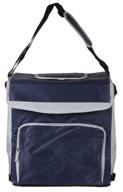
Arktika Cooler bag 3000 30 l blue

10 Review
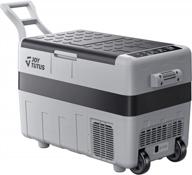
JOYTUTUS 12V Refrigerator Dual Zone 42 Quart (40L) Portable Freezer With Basket - 12/24V DC & 120-240V AC Car Fridge For Travel, Van, Truck, Vehicle, Boat, Camping Road Trip RV Outdoor

16 Review
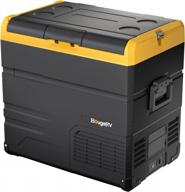
BougeRV Dual Zone Portable Car Refrigerator With APP Control, -4℉-68℉ Temperature Range, 12/24V DC & 110~240VAC Power, E55(59QT)

15 Review
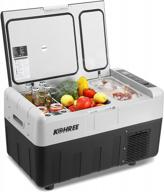
Kohree 12V Refrigerator Portable Freezer, 30L Dual Zone Electric Cooler DC12/24V AC110V/240V For Truck RV Vehicles Camping Travel -4℉-50℉ Temp Control

15 Review
Another interesting products
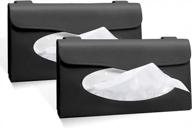
2Buyshop 2 Pack Car Tissue Holder - PU Leather Napkin Box For Sun Visor & Backseat - Black

28 Review
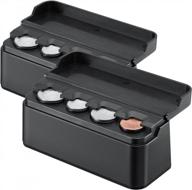
2 Pack JOYTUTUS Coin Holder: Universal Car Change Organizer For Most Trucks Accessories

27 Review
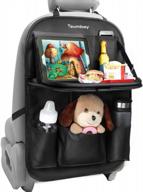
Tsumbay Car Backseat Organizer - PU Leather With Tablet Holder, Foldable Table Tray, And 9 Storage Pockets

33 Review
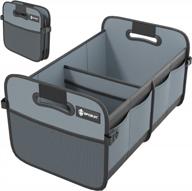
Simplify Your Car Organization With Sposuit'S Collapsible Trunk Organizer - 11 Pockets & Reinforced Handles For Easy Grocery And Cargo Storage! (Grey)

27 Review

